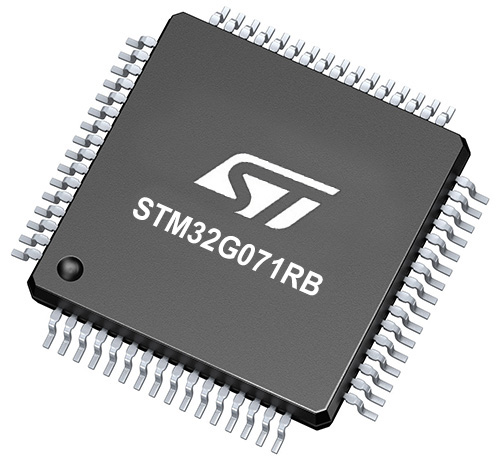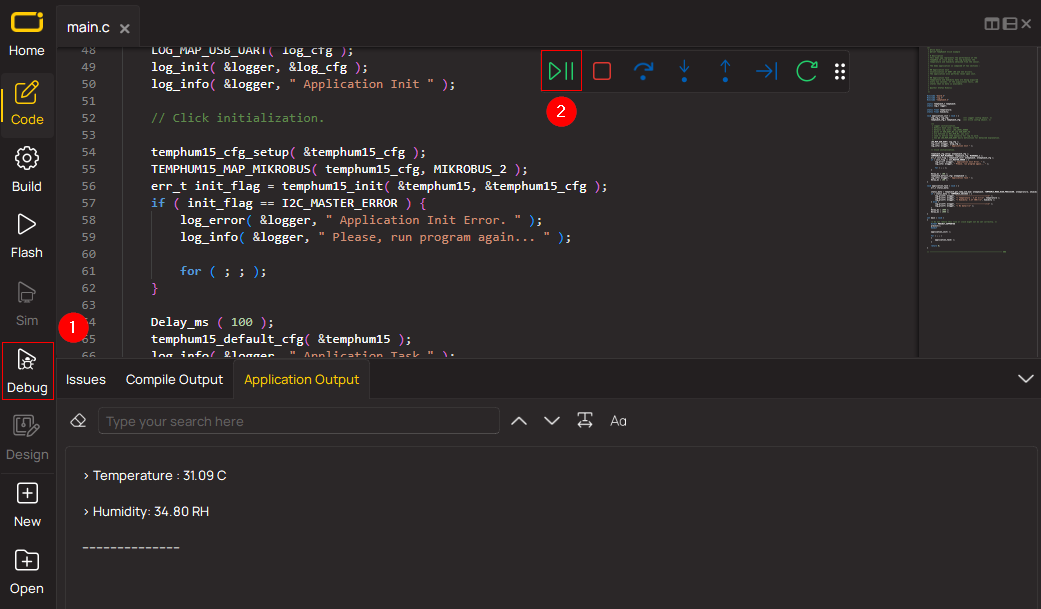Take control of your brushless motors with the most incredible accuracy. Unleash the power of PWM for optimal BLDC management!
A
A
Hardware Overview
How does it work?
Brushless 6 Click is based on the ATmega8A MCU from Microchip. It uses a 50Hz PWM signal at one of the input pins, routed to the PWM pin of the mikroBUS™ socket. The duty cycle of the incoming PWM signal is decoded by the onboard ATmega8A MCU so that a certain pulse width range is used to set the speed and direction of the rotation. The MikroElektronika demo application,
provided with the Brushless 6 Click, uses simplified functions to calibrate and set the speed and direction of the BLDC motor to be used as a reference for future design. Since the MCU output can't be used to drive heavier loads directly, the stator coils are driven through the MOSFET transistors network, controlled by the MCU. The electrical circuit that powers the coils is also
known as the "invertor" circuit because it provides both positive and negative voltages from the connected external power supply. The motor can be connected via the onboard connector, which provides an easy and secure connection. A power connector is also used to connect the external power supply, up to 12V.
Features overview
Development board
Nucleo-64 with STM32G071RB MCU offers a cost-effective and adaptable platform for developers to explore new ideas and prototype their designs. This board harnesses the versatility of the STM32 microcontroller, enabling users to select the optimal balance of performance and power consumption for their projects. It accommodates the STM32 microcontroller in the LQFP64 package and includes essential components such as a user LED, which doubles as an ARDUINO® signal, alongside user and reset push-buttons, and a 32.768kHz crystal oscillator for precise timing operations. Designed with expansion and flexibility in mind, the Nucleo-64 board features an ARDUINO® Uno V3 expansion connector and ST morpho extension pin
headers, granting complete access to the STM32's I/Os for comprehensive project integration. Power supply options are adaptable, supporting ST-LINK USB VBUS or external power sources, ensuring adaptability in various development environments. The board also has an on-board ST-LINK debugger/programmer with USB re-enumeration capability, simplifying the programming and debugging process. Moreover, the board is designed to simplify advanced development with its external SMPS for efficient Vcore logic supply, support for USB Device full speed or USB SNK/UFP full speed, and built-in cryptographic features, enhancing both the power efficiency and security of projects. Additional connectivity is
provided through dedicated connectors for external SMPS experimentation, a USB connector for the ST-LINK, and a MIPI® debug connector, expanding the possibilities for hardware interfacing and experimentation. Developers will find extensive support through comprehensive free software libraries and examples, courtesy of the STM32Cube MCU Package. This, combined with compatibility with a wide array of Integrated Development Environments (IDEs), including IAR Embedded Workbench®, MDK-ARM, and STM32CubeIDE, ensures a smooth and efficient development experience, allowing users to fully leverage the capabilities of the Nucleo-64 board in their projects.
Microcontroller Overview
MCU Card / MCU

Architecture
ARM Cortex-M0
MCU Memory (KB)
128
Silicon Vendor
STMicroelectronics
Pin count
64
RAM (Bytes)
36864
You complete me!
Accessories
Click Shield for Nucleo-64 comes equipped with two proprietary mikroBUS™ sockets, allowing all the Click board™ devices to be interfaced with the STM32 Nucleo-64 board with no effort. This way, Mikroe allows its users to add any functionality from our ever-growing range of Click boards™, such as WiFi, GSM, GPS, Bluetooth, ZigBee, environmental sensors, LEDs, speech recognition, motor control, movement sensors, and many more. More than 1537 Click boards™, which can be stacked and integrated, are at your disposal. The STM32 Nucleo-64 boards are based on the microcontrollers in 64-pin packages, a 32-bit MCU with an ARM Cortex M4 processor operating at 84MHz, 512Kb Flash, and 96KB SRAM, divided into two regions where the top section represents the ST-Link/V2 debugger and programmer while the bottom section of the board is an actual development board. These boards are controlled and powered conveniently through a USB connection to program and efficiently debug the Nucleo-64 board out of the box, with an additional USB cable connected to the USB mini port on the board. Most of the STM32 microcontroller pins are brought to the IO pins on the left and right edge of the board, which are then connected to two existing mikroBUS™ sockets. This Click Shield also has several switches that perform functions such as selecting the logic levels of analog signals on mikroBUS™ sockets and selecting logic voltage levels of the mikroBUS™ sockets themselves. Besides, the user is offered the possibility of using any Click board™ with the help of existing bidirectional level-shifting voltage translators, regardless of whether the Click board™ operates at a 3.3V or 5V logic voltage level. Once you connect the STM32 Nucleo-64 board with our Click Shield for Nucleo-64, you can access hundreds of Click boards™, working with 3.3V or 5V logic voltage levels.
Brushless DC (BLDC) Motor with a Hall sensor represents a high-performance motor from the 42BLF motor series. This motor, wired in a star configuration, boasts a Hall Effect angle of 120°, ensuring precise and reliable performance. With a compact motor length of 47mm and a lightweight design tipping the scales at just 0.29kg, this BLDC motor is engineered to meet your needs. Operating flawlessly at a voltage rating of 24VDC and a speed range of 4000 ± 10% RPM, this motor offers consistent and dependable power. It excels in a normal operational temperature range from -20 to +50°C, maintaining efficiency with a rated current of 1.9A. Also, this product seamlessly integrates with all Brushless Click boards™ and those that require BLDC motors with Hall sensors.
Used MCU Pins
mikroBUS™ mapper
Take a closer look
Click board™ Schematic

Step by step
Project assembly
Track your results in real time
Application Output via Debug Mode
1. Once the code example is loaded, pressing the "DEBUG" button initiates the build process, programs it on the created setup, and enters Debug mode.
2. After the programming is completed, a header with buttons for various actions within the IDE becomes visible. Clicking the green "PLAY" button starts reading the results achieved with the Click board™. The achieved results are displayed in the Application Output tab.

Software Support
Library Description
This library contains API for Brushless 6 Click driver.
Key functions:
brushless6_pwm_start- Start PWM modulebrushless6_pwm_stop- Stop PWM modulebrushless6_set_duty_cycle- Generic sets PWM duty cycle
Open Source
Code example
The complete application code and a ready-to-use project are available through the NECTO Studio Package Manager for direct installation in the NECTO Studio. The application code can also be found on the MIKROE GitHub account.
/*!
* \file
* \brief Brushless6 Click example
*
* # Description
* Brushless 6 click is designed to drive a three-phase sensorless.
*
* The demo application is composed of two sections :
*
* ## Application Init
* This function initializes and configures the logger and the click board.
*
* ## Application Task
* This function drives the motor in both directions increasing and decreasing the speed of the motor.
*
* ## NOTE
* The maximal PWM Clock frequency for this click board is 500 Hz.
* So, the user will need to decrease the MCU's main clock frequency in MCU Settings in order to get up-to 500 Hz PWM clock frequency.
*
*
* \author MikroE Team
*
*/
// ------------------------------------------------------------------- INCLUDES
#include "board.h"
#include "log.h"
#include "brushless6.h"
// ------------------------------------------------------------------ VARIABLES
static brushless6_t brushless6;
static log_t logger;
static float duty_cycle;
// ------------------------------------------------------- ADDITIONAL FUNCTIONS
void brushless6_calibration( )
{
brushless6_pwm_start( &brushless6 );
brushless6_set_duty_cycle( &brushless6, BRUSHLESS6_MIN_PWM_DC );
Delay_1sec( );
Delay_1sec( );
}
void brushless6_setings( )
{
brushless6_set_duty_cycle( &brushless6, BRUSHLESS6_INIT_DC );
Delay_1sec( );
Delay_1sec( );
}
static void clockwise ( )
{
log_printf( &logger, "\r\n------------------------------\r\n" );
log_printf( &logger, " * Clockwise *\r\n" );
Delay_1sec( );
for( duty_cycle = BRUSHLESS6_INIT_DC; duty_cycle > BRUSHLESS6_1MS_DC; duty_cycle -= BRUSHLESS6_PERIOD )
{
brushless6_set_duty_cycle( &brushless6, duty_cycle );
log_printf( &logger, " > " );
Delay_1sec( );
}
log_printf( &logger, "\r\n" );
for( duty_cycle = BRUSHLESS6_1MS_DC; duty_cycle < BRUSHLESS6_INIT_DC; duty_cycle += BRUSHLESS6_PERIOD )
{
brushless6_set_duty_cycle( &brushless6, duty_cycle );
log_printf( &logger, " < " );
Delay_1sec( );
}
}
static void counter_clockwise ( )
{
log_printf( &logger, "\r\n------------------------------\r\n" );
log_printf( &logger, " * Counter clockwise *\r\n" );
Delay_1sec( );
for( duty_cycle = BRUSHLESS6_INIT_DC; duty_cycle < BRUSHLESS6_2MS_DC - BRUSHLESS6_PERIOD; duty_cycle += BRUSHLESS6_PERIOD )
{
brushless6_set_duty_cycle( &brushless6, duty_cycle );
log_printf( &logger, " > " );
Delay_1sec( );
}
log_printf( &logger, "\r\n" );
for( duty_cycle = BRUSHLESS6_2MS_DC - BRUSHLESS6_PERIOD; duty_cycle > BRUSHLESS6_INIT_DC; duty_cycle -= BRUSHLESS6_PERIOD )
{
brushless6_set_duty_cycle( &brushless6, duty_cycle );
log_printf( &logger, " < " );
Delay_1sec( );
}
}
// ------------------------------------------------------ APPLICATION FUNCTIONS
void application_init ( void )
{
log_cfg_t log_cfg;
brushless6_cfg_t cfg;
/**
* Logger initialization.
* Default baud rate: 115200
* Default log level: LOG_LEVEL_DEBUG
* @note If USB_UART_RX and USB_UART_TX
* are defined as HAL_PIN_NC, you will
* need to define them manually for log to work.
* See @b LOG_MAP_USB_UART macro definition for detailed explanation.
*/
LOG_MAP_USB_UART( log_cfg );
log_init( &logger, &log_cfg );
log_info( &logger, "---- Application Init ----" );
// Click initialization.
brushless6_cfg_setup( &cfg );
BRUSHLESS6_MAP_MIKROBUS( cfg, MIKROBUS_1 );
brushless6_init( &brushless6, &cfg );
brushless6_calibration( );
brushless6_setings( );
}
void application_task ( void )
{
clockwise( );
counter_clockwise( );
}
int main ( void )
{
/* Do not remove this line or clock might not be set correctly. */
#ifdef PREINIT_SUPPORTED
preinit();
#endif
application_init( );
for ( ; ; )
{
application_task( );
}
return 0;
}
// ------------------------------------------------------------------------ END


































